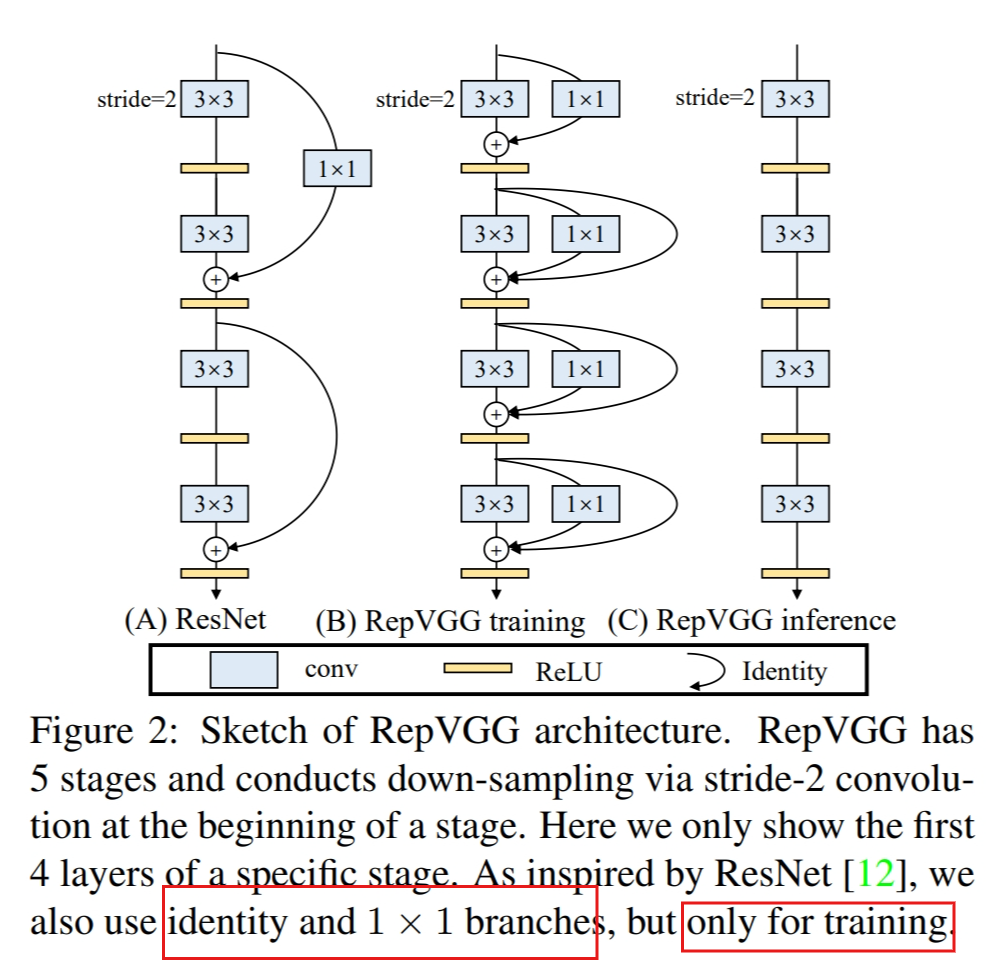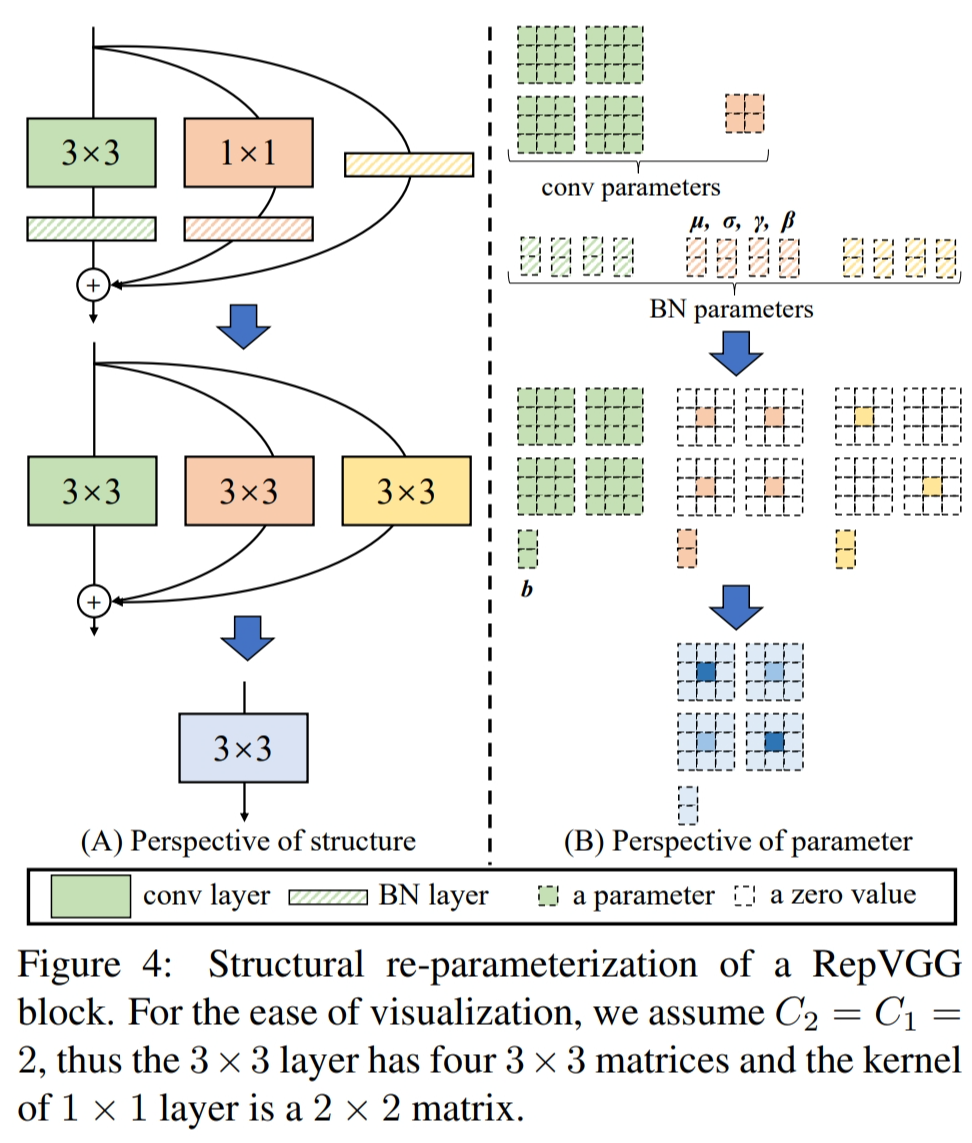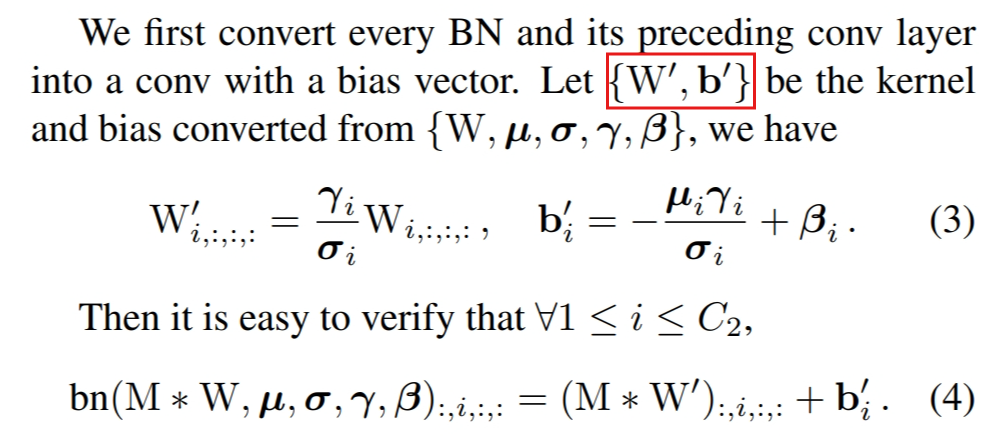RepVGG: Making VGG-style ConvNets Great Again
Abstract
a stack of 3 × 3 convolution and ReLU, while the training-time model has a multi-branch topology.
decoupling of the training-time and inference-time architecture realized by structural re-parameterization technique
Introduction
Network Architecture Redesign
Comparative Analysis of Classic Convolutional Neural Networks: VGG, Inception, ResNet, and DenseNet
NAS
Automatic
Manually
Searched Compound Scaling Strategy
balancing network depth, width, and resolution to improve performance
Drawback
complicated multi-branch designs
Resnet: residual-addition
Inception: branch-concat
Components increasing the memory access cost and lacking support of various devices.
depth-wise conv in Xception
channel shuffle in ShuffleNets
Advantage of RepVGG
RepVGG has the following advantages.
The model has a VGG-like plain (a.k.a. feed-forward) topology 1 without any branches, which means every layer takes the output of its only preceding layer as input and feeds the output into its only following layer.
The model’s body uses only 3 × 3 conv and ReLU.
The concrete architecture (including the specific depth and layer widths) is instantiated with no automatic search, manual refinement, compound scaling, nor other heavy designs.
Motivation of decoupling between train-time and inference-time
Since the benefits of multi-branch architecture are all for training and the drawbacks are undesired for inference, we propose to decouple the training-time multi-branch and inference-time plain architecture via structural re-parameterization, which means converting the architecture from one to another via transforming its parameters.

Building RepVGG via Structural Re-param
Simple is Fast, Memory-economical and Flexible
Many recent multi-branch architectures have lower theoretical FLOPs than VGG but may not run faster.
The multi-branch topology imposes constraints on the architectural specification.
Re-param for Plain Inference-time Model


This transformation also applies to the identity branch because an identity can be viewed as a 1 × 1 conv with an identity matrix as the kernel.
After such transformations, we will have one 3 × 3 kernel, two 1 × 1 kernels, and three bias vectors.
Then we obtain the final bias by adding up the three bias vectors, and the final 3 × 3 kernel by adding the 1×1 kernels onto the central point of 3×3 kernel, which can be easily implemented by first zero-padding the two 1 × 1 kernels to 3 × 3 and adding the three kernels up.
Architectural Specification
We decide the numbers of layers of each stage following three simple guidelines.
The first stage operates with large resolution, which is time-consuming, so we use only one layer for lower latency.
The last stage shall have more channels, so we use only one layer to save the parameters.
We put the most layers into the second last stage
To further reduce the parameters and computations, we may optionally interleave groupwise 3 × 3 conv layers with dense ones to trade accuracy for efficiency.
We do not use adjacent groupwise conv layers because that would disable the inter-channel information exchange and bring a side effect: outputs from a certain channel would be derived from only a small fraction of input channels.